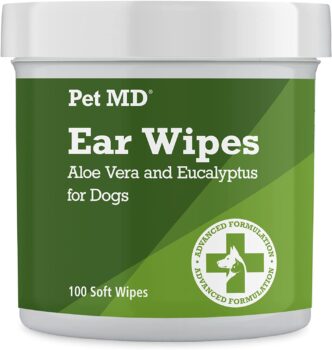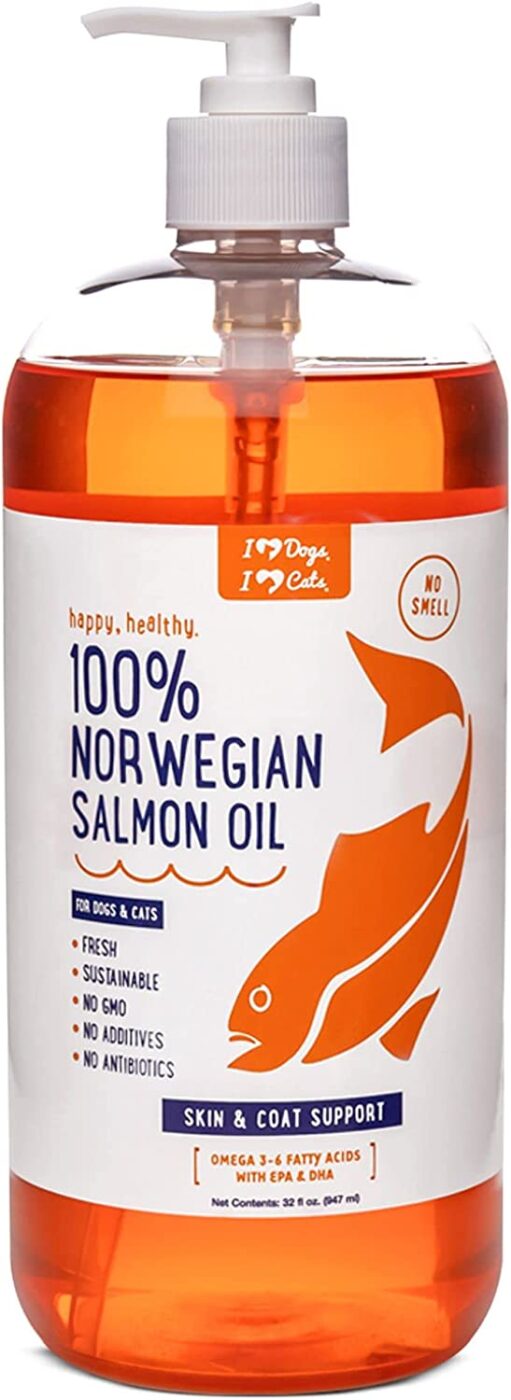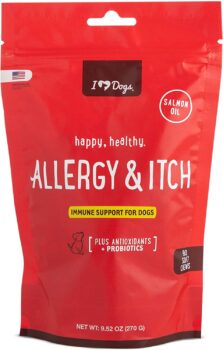Beagles, with their affable nature, keen sense of smell, and distinctive howl, are a popular choice for many families. Nevertheless, their long, floppy ears make them more susceptible to ear infections. This article presents 11 ways to treat and prevent ear infections in Beagles, with a special focus on the benefits of Omega-3 in their diet.

iHeartDogs is reader supported. Some of the links below may be paid affiliate links, where we receive a small commission on a product at no additional cost to you.
1. Regular Ear Cleaning
Regularly cleaning your Beagle’s ears can prevent the buildup of wax and debris that could lead to bacterial growth and infections. Use a vet-approved solution, and avoid inserting anything into the ear canal.
Our favorite ear cleaner is these PetMD brand ear wipes on Amazon.
2. Dry Ears After Wet Exposure
After your Beagle has been swimming or bathed, it is crucial to dry their ears thoroughly to prevent the moist environment that promotes bacterial growth and potential infections.
3. Regular Vet Check-ups
Regular vet visits can help detect early signs of ear infections and provide advice on the correct way to maintain your Beagle’s ear health.
4. Balanced Diet
A well-balanced diet can support a robust immune system. Incorporating Omega-3 fatty acids can help manage inflammation and allergies, which could reduce the likelihood of ear infections.
5. Omega-3 Supplementation
Omega-3 fatty acids, particularly those found in fish oil, have anti-inflammatory properties that can help manage allergies. Talk to your vet about adding Omega-3 supplements to your Beagle’s diet.
We’re fans of this Norwegian salmon oil on Amazon. It’s a bright orangish-pink color and has no fishy smell at all due to it’s ultra high purity.
6. Allergy Management
If your Beagle suffers from allergies, managing them effectively can help prevent ear infections. This could include dietary changes, environmental modifications, or medication.
A few good supplements to help your dog’s allergies are apple cider vinegar, quercetin, and colostrum, all of which are found in many natural allergy supplements like this one.
7. Avoidance of Allergens
If you know your Beagle is allergic to certain substances, it’s best to limit their exposure to these allergens, reducing the likelihood of allergies and subsequent ear infections.
8. Regular Exercise
Regular exercise contributes to overall health and a robust immune system, reducing the risk of infections.
9. Grooming
Regular grooming, including trimming the hair around the ears, can increase ventilation to the ears and reduce the chance of infection.
10. Healthy Weight Maintenance
Overweight dogs can be at increased risk for various health issues, including ear infections. Regular exercise and a balanced diet can help maintain a healthy weight.
11. Use of Prescribed Medications
If your Beagle has a history of ear infections, your vet might prescribe preventive medications. Be sure to follow the instructions precisely.
FAQ
Q1: What are the signs of an ear infection in Beagles? A: Beagles may exhibit signs such as frequent ear scratching, head shaking, redness, swelling, or discharge from the ear.
Q2: What causes ear infections in Beagles? A: Ear infections can be caused by bacteria, yeast, ear mites, foreign bodies in the ear, or excessive moisture. Allergies can also lead to ear infections.
Q3: Are ear infections in Beagles serious? A: Yes, if left untreated, ear infections can cause chronic ear disease or even hearing loss.
Q4: Can I use human ear infection treatments on my Beagle? A: No, always consult with your vet before administering any treatments. Human medicines may not be appropriate or safe for your Beagle.
Q5: How do I apply ear drops to my Beagle? A: Lift the ear flap, apply the drops as directed, and then gently massage the base of the ear. Always follow your vet’s specific instructions.
Q6: Why does my Beagle keep getting ear infections? A: Recurrent ear infections could be due to several factors, such as unresolved allergies, inadequate ear cleaning, or an underlying health condition. Your vet can identify the root cause.
Q7: How does diet impact ear infections in Beagles? A: A balanced diet, rich in Omega-3 fatty acids, can help manage inflammation and allergies, thereby reducing the likelihood of ear infections.
Q8: Are there breeds more prone to ear infections than Beagles? A: Breeds with floppy ears, like Beagles, are generally more prone to ear infections. Regular vet check-ups and preventive care can help mitigate this risk.
Q9: How often should I clean my Beagle’s ears? A: Typically, a weekly ear cleaning is sufficient, but your vet might advise a different schedule based on your dog’s specific needs.
Q10: What should I do if I suspect my Beagle has an ear infection? A: If you suspect an ear infection, contact your vet immediately. Timely treatment can prevent complications and ensure your Beagle’s wellbeing.
Implementing these strategies, including regular cleaning, Omega-3 enriched diet, and overall health maintenance, can help prevent ear infections in your Beagle. Always consult with your vet for advice tailored to your dog’s unique needs.



 Toledo, United States.
Toledo, United States.
